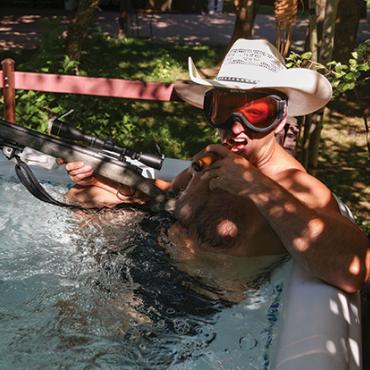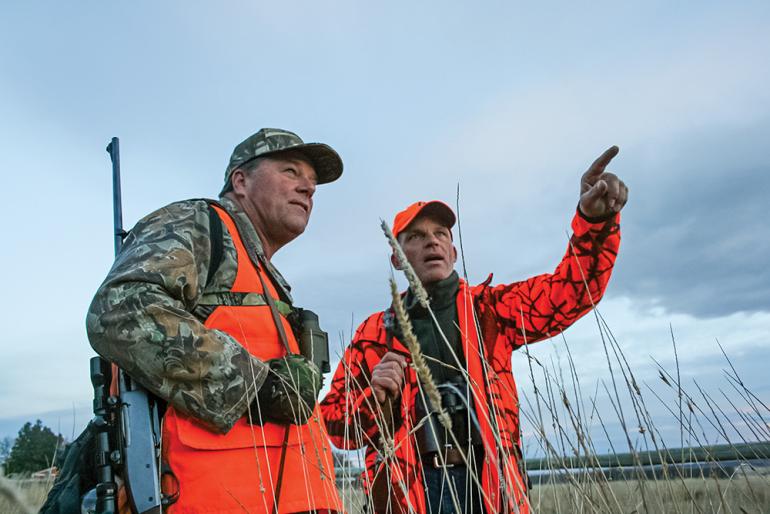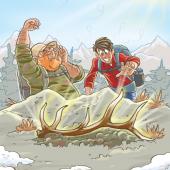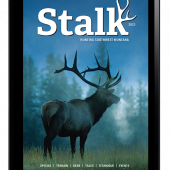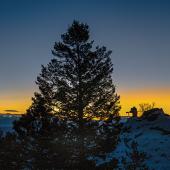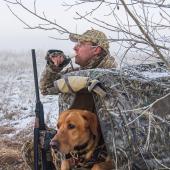Rookie Season
Figuring it all out as a new hunter.
Learning to hunt in Montana is among the most challenging of undertakings, and many a frustrated neophyte has abandoned the activity after the first season. As with most outdoor pursuits, there’s all the required gear, skills to develop, and knowledge of where to go. Unlike most outdoor pursuits, hunting also requires formal training and licensing, an understanding of animal behavior, and intimacy with deadly weapons. Sure, the occasional greenhorn knocks down an animal his first season, or even his first hunt. But that’s mostly luck—as the saying goes, even a blind squirrel finds a nut once in a while. And while experience is the best teacher, a little help goes a long way toward flattening the learning curve. Here’s an overview.
Hunter Education
The first step is meeting the prerequisite. A hunter’s-safety course is required for anyone born after January 1, 1985 (don’t ask us to explain this one—there are plenty of idiots over age 36). This can be done online, but if you’re new to hunting and especially if you’re new to firearms, taking a classroom course and/or field day is highly recommended. Safety in the field is paramount, for both yourself and other hunters.
Licensing & Tags
Next up is getting legal. While you can certainly use the FWP website, for your first season it’s best to visit an FWP office in person. Region 3’s is on S. 19th Ave., between College and Kagy. They’ll answer all your questions and get you set up with a basic license and a set of general tags—elk, deer, upland bird, waterfowl, etc. A few over-the-counter b-tags (antlerless) are available; again, ask the friendly FWP folks for advice. It’s also helpful to find an experienced hunter—maybe a neighbor or co-worker—and pick his or her brain. Buy the beer and take notes.
Where to Hunt
This is the most difficult part of the hunting process. There’s no shortcut here; start early, giving yourself plenty of time to navigate the labyrinthine regulations. Settle in at the kitchen table with a printed copy, a tablet or computer open to the digital regs, a Gazetteer or additional device with a mapping program, and a big glass of whiskey. Flip through the regs to the different hunting districts and cross-reference with both the FWP regional maps and the large-scale topo map to figure out what’s what and where’s where. Read carefully, drink slowly, and breathe; eventually things will start to make sense. Specific, seemingly random restrictions abound and perusing the fine print is imperative—for example, you can’t hunt muley bucks in the Bridgers without a special permit, but they’re fair game throughout most of the other mountain ranges around Bozeman. Again, doing this with an experienced friend or acquaintance will be well worth the bar tab.
Private Land
Somewhat less abstruse is the rundown on private landowners that allow public hunting. Pick up a hard copy of the Block Management Area (BMA) descriptions at the FWP office; it comes with large fold-out maps. Around Region 3, reservations are often required, and many BMAs require advance permission (as opposed to the sign-yourself-in variety common in other parts of the state). Cross-reference with the regs and plan a few hunts; while BMAs generally get pounded, they can be productive, especially when hunting pressure in the national forest pushes animals onto private land.
Public Land
This is where the magic happens. No permission needed. No rules beyond the regs. Pick a spot, shoulder your pack, and start walking. Explore. Discover. Learn. In every direction from Bozeman are timbered mountainsides home to deer, elk, and upland birds. Wander the woods and learn their ways. At first you’ll move too fast and see next to nothing. Eventually you’ll slow down and the forest will come to life. Finally, you’ll do it right and luck will be on your side. A whitetail will step out from behind a tree, or a blue grouse will lift off the ground. You’ll raise your gun and squeeze the trigger. The animal will fall. Later, as you bite into that tender, delicious meat, you’ll smile, re-live the hunt in your mind, and start planning the next one.


